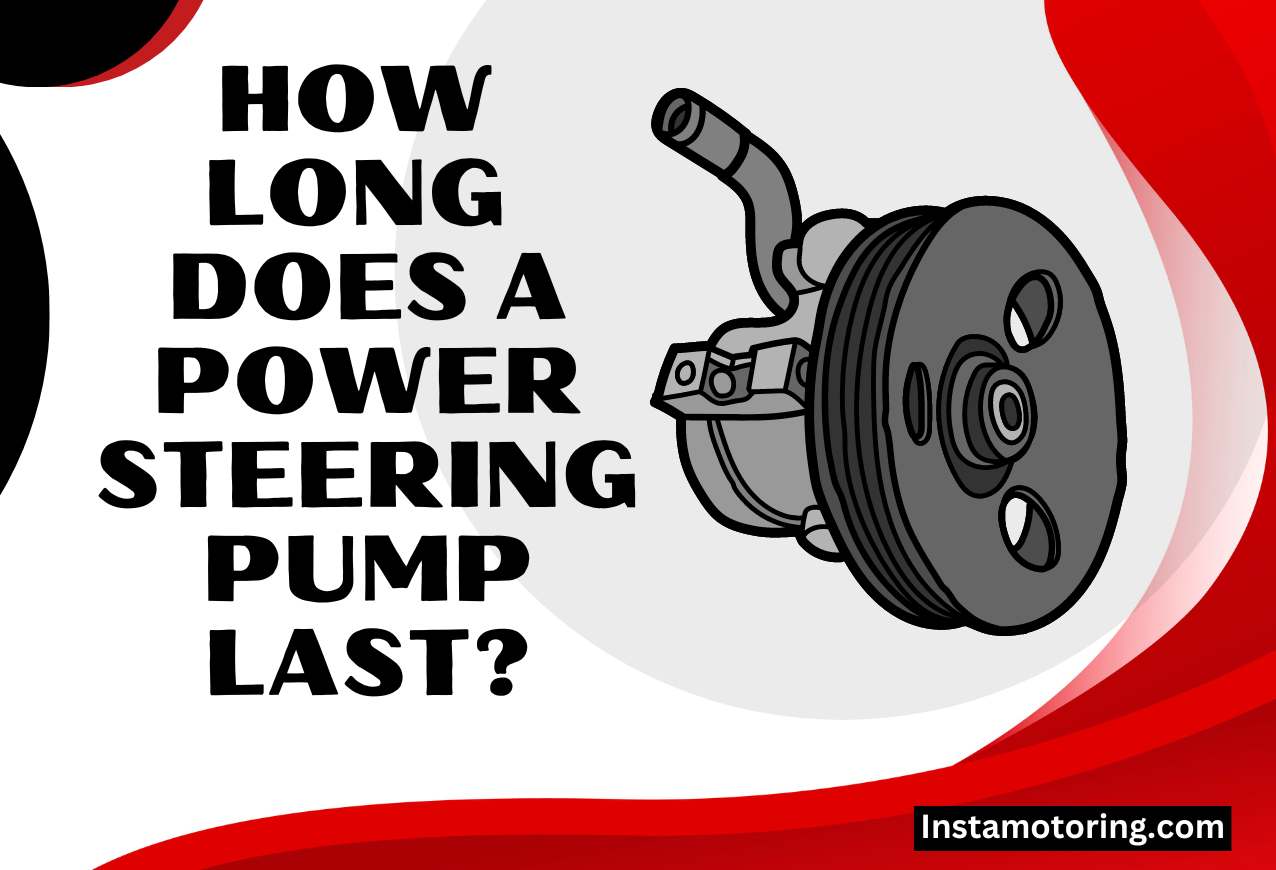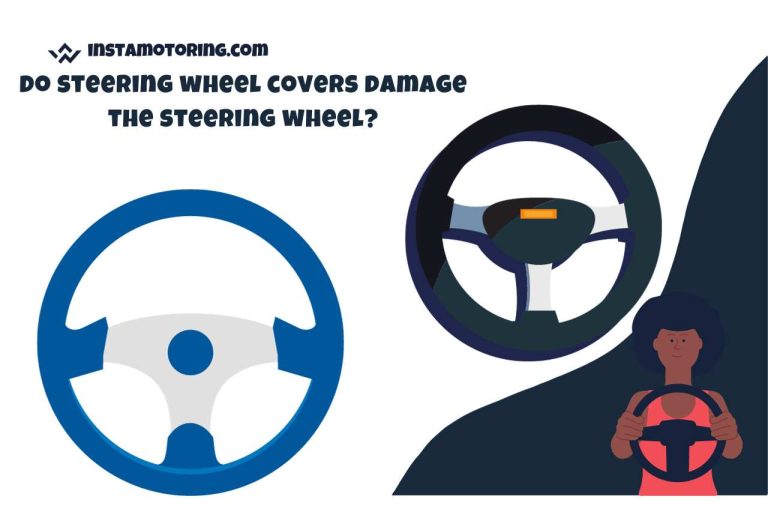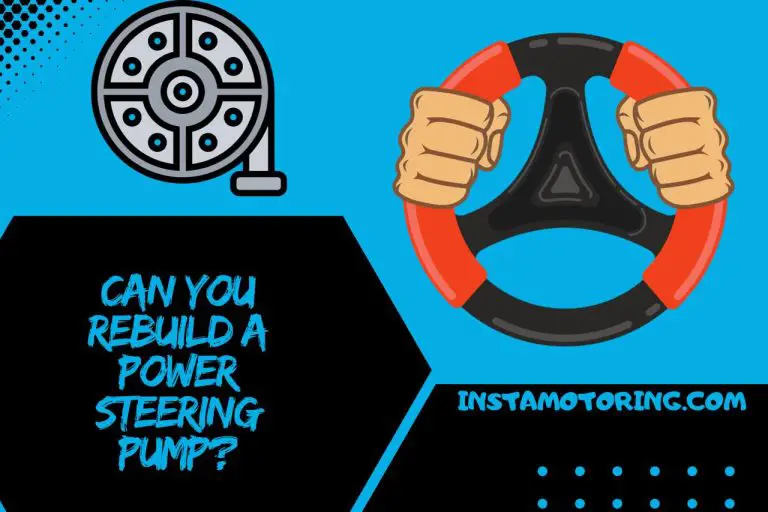How Long Does a Power Steering Pump Last?
The Power steering pump is an important component of the power steering system. At the heart of this system is the power steering pump, a component often taken for granted until signs of trouble emerge. If you’ve ever wondered about the lifespan of the power steering pump, you’re in the right place. Let’s discuss this topic.
How Long Does a Power Steering Pump Last?
The lifespan of a power steering pump typically ranges between 100,000 to 150,000 miles. This estimation is influenced by several factors, with your driving habits and maintenance practices playing pivotal roles in determining how long the power steering pump will last.
As you clock miles on your vehicle, the power steering pump undergoes a gradual wear-and-tear process which is pretty normal. It’s essential to understand that this mileage range is a general guideline, and individual experiences may vary.
Some factors that can affect the pump’s longevity include the quality of the pump itself, the overall manufacturing standards of your vehicle, and the conditions in which you drive. We will discuss these factors later in the article.



What Factors Influence the Longevity of a Power Steering Pump?
The longevity of a power steering pump is influenced by various factors such as maintenance, fluid quality, vehicle type, driving conditions and habits, and many more. We’ll walk you through each of these factors.
Regular Maintenance
Routine maintenance, including checking and maintaining power steering fluid levels, is vital. Regular service intervals help identify potential issues early on, contributing to a longer power steering pump life. This is not a demanding task, and you should be able to check and maintain the power steering fluid yourself.
Fluid Quality
Using high-quality power steering fluid and ensuring it remains free from contaminants is essential. Clean and adequate fluid contributes to optimal pump performance and longevity.
Driving Conditions and Skills
Frequent driving in extreme conditions, such as high temperatures or stop-and-go traffic, can contribute to increased wear on the power steering pump. Smooth driving and avoiding harsh conditions can extend the power steering pump life.
Although driving conditions might not be something that can be controlled by you, smooth driving is definitely a skill that you can work on, we guess.
Vehicle Age
Older vehicles may experience more wear and tear, potentially affecting the power steering pump’s durability. Regular check-ups become increasingly important as your vehicle ages. Without waiting for repairs to take place, it would be best if you make a habit of regular checks for important vehicle parts including the power steering pump.
Manufacturer Quality
The quality of the power steering pump itself and the overall manufacturing standards of your vehicle impact its longevity. Vehicles from reputable manufacturers often come with higher-quality components.
If you opt for a power steering pump rebuild for whatever reason, make sure to go for a high-quality replacement.
What Are the Signs of a Failing Power Steering Pump?
Here are some prominent signs of a failing power steering pump.
Whining or Groaning Noises
A common early sign is a whining or groaning noise, especially during steering maneuvers. This noise may indicate issues with the pump’s internal components, such as worn-out bearings or cavitation. we have a dedicated article on “Does power steering make noise,” read it for additional info.
Difficulty in Steering
If you experience increased resistance or difficulty in turning the steering wheel, it could be a sign of reduced power steering pump efficiency. This may result from worn-out components or inadequate fluid levels. As you know now, this could ultimately lead to a pump malfunction.
Fluid Leaks
Visible power steering fluid leaks around the pump or hoses are a clear indication of a problem in the pump. Leaks can occur due to damaged seals, deteriorated hoses, or issues within the pump itself.
Foaming or Bubbling Fluid
If you notice foaming or bubbling in the power steering fluid reservoir, it suggests air entrainment. This can be caused by pump issues or air leaks in the system, impacting its functionality.
Vibrations in the Steering Wheel
Unusual vibrations or a shaky steering wheel during turns may signal problems with the power steering pump. This could result from irregularities in the pump’s internal components.
Burning Smell
A burning smell, especially around the power steering pump area, may indicate overheating. Overworked or failing pumps can generate excessive heat, leading to a distinct odor.
FAQ
How Much Does it Cost to Replace a Power Steering Pump?
The cost to replace a power steering pump varies based on several factors, but on average, you can expect to pay between $300 to $800 for parts and labor. Keep in mind that the specific cost can be influenced by your vehicle’s make and model, the pump’s brand, and whether you choose a new or remanufactured part.
Do Power Steering Pumps Fail Suddenly?
Yes, power steering pumps can fail suddenly. However, the symptoms start way early with gradual wear and tear on internal components, such as bearings and seals. Over time, these components deteriorate, impacting the pump’s efficiency.
The process may accelerate due to factors like extreme driving conditions, inadequate maintenance, or contaminated power steering fluid. Initially, you might notice subtle signs, such as whining noises or increased steering resistance.
Ignoring these indicators can lead to a sudden breakdown of the pump, affecting the entire power steering system. Regular monitoring, timely maintenance, and addressing early warning signs can help prevent sudden power steering pump failure.
How Long Does it Take to Fix a Steering Pump?
The time to fix a power steering pump varies, generally taking between 2 to 4 hours. You may experience longer repair times if additional components, such as hoses or belts, also require attention.
Remember, this timeframe is an estimate, and actual repair durations can vary. We recommend to consult with your mechanic for a more accurate assessment tailored to your vehicle’s needs.



My name is James, I work as an Automotive Designer with 9 years of experience. I also work as a mechanic and vehicle inspector. I love deciphering complicated car exteriors and interiors and resolving fluid and oil troubles. InstaMotoring.com is here to help you troubleshoot your car with dependable and expert help.





![What is a Quick-release Steering Wheel? [Pros and Cons]](https://www.instamotoring.com/wp-content/uploads/2023/09/How-often-should-you-pressure-wash-your-driveway-50-768x512.jpg)
![Bubbles in Power Steering Fluid : [Symptoms, Causes and Fixes]](https://www.instamotoring.com/wp-content/uploads/2022/11/bubbles-in-power-steering-fluid-768x512.jpg)
![Can You Replace a Steering Wheel? [Factors to Consider]](https://www.instamotoring.com/wp-content/uploads/2023/10/why-does-my-mattress-move-away-from-headboard-6-768x512.jpg)